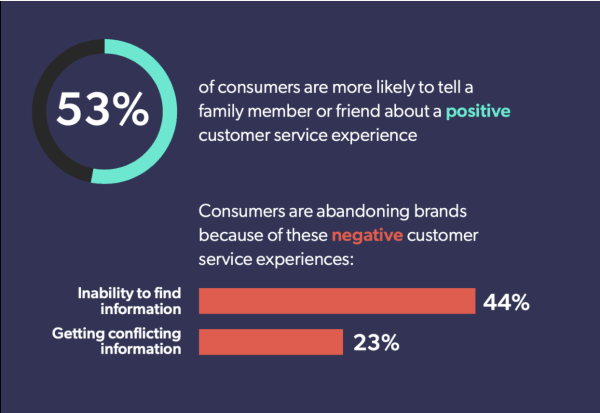It was just a year ago that the Coveo offices (and almost all the world) shut down because of the pandemic. In looking back, I see parallels between how we were caught flat-footed in terms of the pandemic and also in terms of digital transformation. Not all companies floundered of course, but many did.
This is a story about denial, frustration, and fighting to remain relevant.

I’m a news junkie and live in the shadows of New York City at the Jersey shore. The first Covid-19 cases had been diagnosed in this region at the end of February, and sadly, the first deaths were recorded a week later. Despite the tragedies that I had seen unfolding (for months) in Asia and in Italy, the collective was stunned when it reached North America.
Was it real? Did we have to pay attention?During a press conference, Utah Jazz’ Rudy Gobert tried to make a joke out of Covid. Denial met reality two days later when Gobert tested positive. The NBA promptly canceled all games. Within a week, the global pandemic changed … everything. Europe, Asia, and most of North America closed up shop, the sports world was shuttered, and those of you reading this started working from home.

All the digital transformation efforts that everyone had said they had done were suddenly laid bare. And boy, was there a lot of bare.
All of us, shoppers, customers, and employees alike were largely left to our own devices to forage for food or information. Stalwarts like Amazon and Netflix were cleaning up as they dominated over every other option. But even the stalwarts couldn’t provide us with essentials like paper products, chicken, and, of course, the very necessary personal protection equipment (PPE).
It was frustrating – and all I kept thinking was thank god my kids are college–age. How in the world would I have coped with work zooms and homeschooling zooms? Indeed, lucky parents had justZoom or Blue Jeans or Google Hangouts or GoToMeeting or Webex(or anything else I forgot).
Most had a mix of those. In the best of situations, it’s frustrating when computers hang, let alone while toggling between multiple ones in the four minutes allotted for changing classes. And if homeschooling was bad, not having summer camps, playdates, daycare, or any respite from sameness, were awful too.

It was no wonder CSAT scores plunged over the summer months. All of us were on our last nerve by July. So just how frustrated were people?
User experience is one of those terms we use without really understanding what it takes to deliver it. It’s like beauty– in the eye of the beholder. We wanted to find out what people were beholding and see if we couldn’t really capture what was aggravating them.
In January, here at Coveo, we surveyed nearly 2,000 U.S. consumersof all ages, workers and non, to gauge consumer opinion about their digital experiences. We broke the answers up into three categories: Customer Service, Ecommerce, and Digital Workplace.
Experiences in Customer Service
As consumers who had to cancel plane tickets, grocery shop, and check out Covid symptoms, we had to navigate websites with awful search and poor navigation. Finding correct information was like looking for toilet paper.

Read the full Customer Service Relevance Report
Experiences in Ecommerce
With physical stores being shut down, people expected that the online experience would be as good as – or even better than – the physical one. And they weren’t happy with the results.

Read the full Ecommerce Relevance Report
Experiences in the Digital Workplace
As employees who were now shipwrecked at home, they reported they felt isolated and overwhelmed. They often couldn’t find information, and even when they could, they didn’t know if it was accurate or if they were allowed to share it.

Read the full Digital Workplace Relevance Report
(Is it any wonder then when you called into a company for support that you had to call back three times to triangulate the information given?)
User Experience Must Be Relevant
As our world shrunk, and an air of helplessness took over, digital tasks actually took on greater importance.People were frustrated by all the irrelevant information and products they had to sift through – just to survive.

So how did we get here?
Denial is such an interesting state of mind. We choose not to believe things – because to do so provokes anxiety. That’s why people didn’t want to believe that Covid-19 could cross to the States. That’s why digital transformation, which has been the subject articles and conference titles since the ‘00s, had been backburnered.
When I put two dailies on the web in 1995, I tried to convince surrounding metro papers to work with us to create a home finder, jobs finder and auto finder. For our papers that was $500M in classified advertising that we wanted to protect. Instead, neighboring publishers said they wished the Internet would just disappear.
Instead, Monster, Craigs List and realtor.com ate their cash–cow classifieds.
Confronting Fears With Support
Which brought me back to today.How, in 2021, let alone 2020, could companies have ignored the fate of newspapers and found themselves in such a similar existential predicament? Brian Solis, a global authority on digital transformation and experiences, studied why companies were slow to transform. Low digital literacy, costs, a risk–averse culture, and lack of urgency were but some of the reasons.
Suddenly there was urgency – but is there time?

The good news about denial, even in business, is that you can overcome it. Here are a few strategies:
- Looking honestly at what you fear
- Considering the consequences of doing nothing
- Finding support
Fear
Well, there is no greater fear than no longer surviving, everything else can be overcome.For any industry to stay competitive in the online experience economy – and serve all their audiences (internal and external) – businesses must adopt the right technology to create highly personalized and relevant experiences.
Thankfully, the solution doesn’t require an army of data scientists to uncover behavioral insights about each customer. Instead, by applying off-the-shelf AI across all digital touchpoints, you can inject relevance into every point in your users’ journeys.
Doing Nothing
Well, they tried that, and here we are. Frustration abounds.
Find Support
So not everyone was caught flat-footed. Companies like Dell, Xero, Salesforce, and Caleresfound that the transformation efforts they had put in paid off in a big way. They used off-the–shelf AI to create highly relevant experiences for their weary audiences.

Even betternews – CX leaders from those companies are too happy to share the steps they took, the best practices they adopted, and the results of those efforts. Check out what they say. The advice is priceless.


